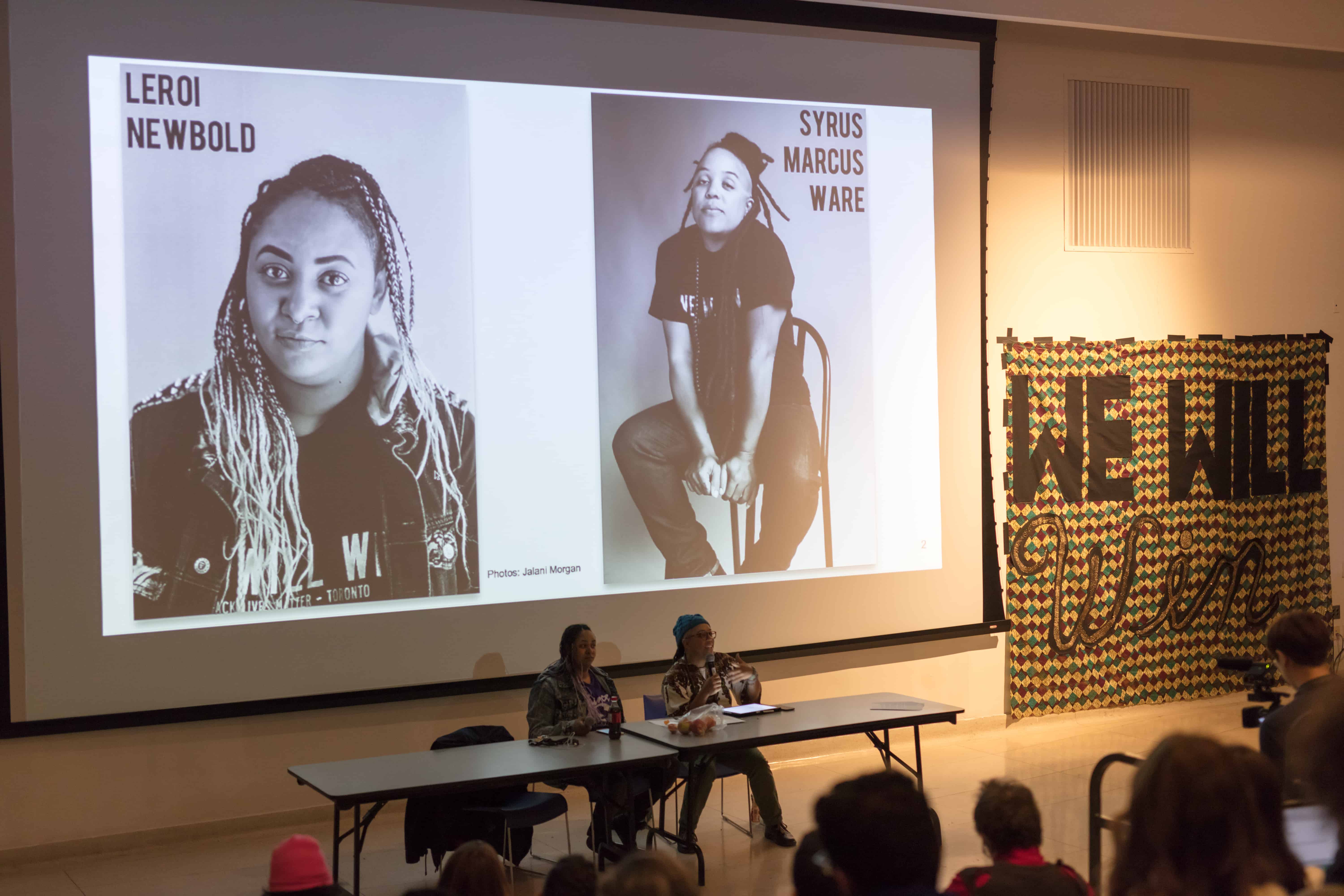Art Creates Change: The Kym Pruesse Speakers Series is hosted by the Ontario College of Art and Design University; it is free to the public and features artists who discuss how art is a proponent of cultural and societal change. The October 26 talk focused on Black Lives Matter – Toronto (BLM – TO) and was led by LeRoi Newbold and Syrus Marcus Ware, members of the organization that is “actively blurring the lines between direct action and artistic practice.”
The talk focused on how much art lays a foundation for what BLM – TO does and how they do it. “The work that we do is always rooted in creativity,” Ware explained. “There is a very deep historical connection between activist movements and artistic movements.”
Artists like Emory Douglas created wood block cuts featured in widely distributed Black Panther newspapers. They were meant to tell a story of the movement during the late 1960s and early 1970s. His works offered everyday tips and advice for Black people in cities across the US but also instruction on how to make their own pieces of art. “He was actually using it as a pedagogical tool for people to use art in their own activism and organizing,” said Ware.
Artists like sculptor Betye Saar, Faith Ringgold, and Adrian Piper were also referenced during the talk. Piper’s durational performance piece “My Calling (Card)” (1986–1990) involved the passing of a small card to those who had made racist or sexist remarks. They were used as “a passive-aggressive approach to showcase how racism and sexism are intrinsically harmful.”
A main theme of this discussion was space — how it is occupied and by whom. “We’re aware of the ways that art [and] contemporary art spaces can kind of consume, take up, appropriate, and co-op activist movements, and we’re quite weary of that,” said Ware. “In these situations, activism becomes a symbol, it becomes a metaphor.”
The group rejects the notion of activism being a mere representation and instead aligns itself with the movement of freedom fighters who used innovative and creative means to activate change because their survival depended on it.
An example is an image of Huey Newton sitting on a wicker chair, an artistic response to resistance. Ware explained that artists and activists were one in the same as they worked to create lasting pieces that held an aesthetic vision that went into “creating key moments in history.”
Inspired by these artists, the group organized BLM – TO: Black City, a 15-day occupation outside of the Toronto Police Headquarters in March of this year. In response to the death of Andrew Loku, the subsequent acquittal of the police officer involved in the incident, and the scaling back of Afrofest, the group rallied outside in an effort to “take it back, to have our own Black arts festival outside police headquarters,” explained Newbold.
During those cold days and freezing nights, “art was what kept us going,” Newbold continued. Posters and fabric banners adorned the site; flatbed trucks were used as stages for performances, like spoken word and DJ sets. Dancing, memes, and installations all became a part of the occupation. Sometimes supporters would drop off more art, like paintings from previous occupations in the 1990s. Artist Amber Williams-King often created digital art and used photography to display images of Loku, Alex Wettlaufer, and others who had died violently: “It was at that time I realized that art is sometimes the only thing that lets us remember our existence here.”
Storytelling became a big part of the occupation; tales of resistance were exchanged between older and newer generations of artists working to create change. At Art Creates Change, one thing became clear: “Blackness in Canada is dehistorized,” said Newbold. “Black art and the movement’s art is like sitting down to hear stories from your grandma who maybe lives too far away to tell them to you.”
During this year’s PrideTO celebrations, BLM – TO was asked to be the honoured group to lead the parade on July 3. In response to the alleged lack of support the Pride Committee displayed during Black City and in the months leading up to the parade, BLM – TO partnered with Blackness Yes and Black Queer Youth to “devise a performance/direct action plan that would specifically call out the anti-Black racism that we experienced.”
“So we marched in formation… all wearing black and gold, behind this truck that was emblazoned with images of our ancestors, with music of resistance, playing loud… and we proceeded down the route,” said Ware.
Upon reaching Yonge Street and College Street, the group sat down. They sat down in solidarity with other Black activist groups across the country and in the US, as member Alex Williams asked the crowd: “Are you proud?”
A rainbow smoke bomb was released, and BLM – TO requested a meeting with executives from the Pride Committee. While they waited, they shared songs and speeches, discussed the work they were doing and criticized Pride. Before long, the executive showed up and were presented with a list of demands that, amongst many things, ensured that everyone felt proud and safe in the parade. This included the exclusion of police presence because the groups claimed the police had been unfairly targeting Black people in the city.
In the weeks that followed, the executives decried the incident; ultimately the Pride Board finally agreed and consented to the demands, with the exception to the one regarding the police presence.
The mixed responses meant that, like Piper’s durational piece, the performance and the action is still ongoing. “It’s a durational performance that perhaps will never be completed but is absolutely ongoing,” said Ware.


